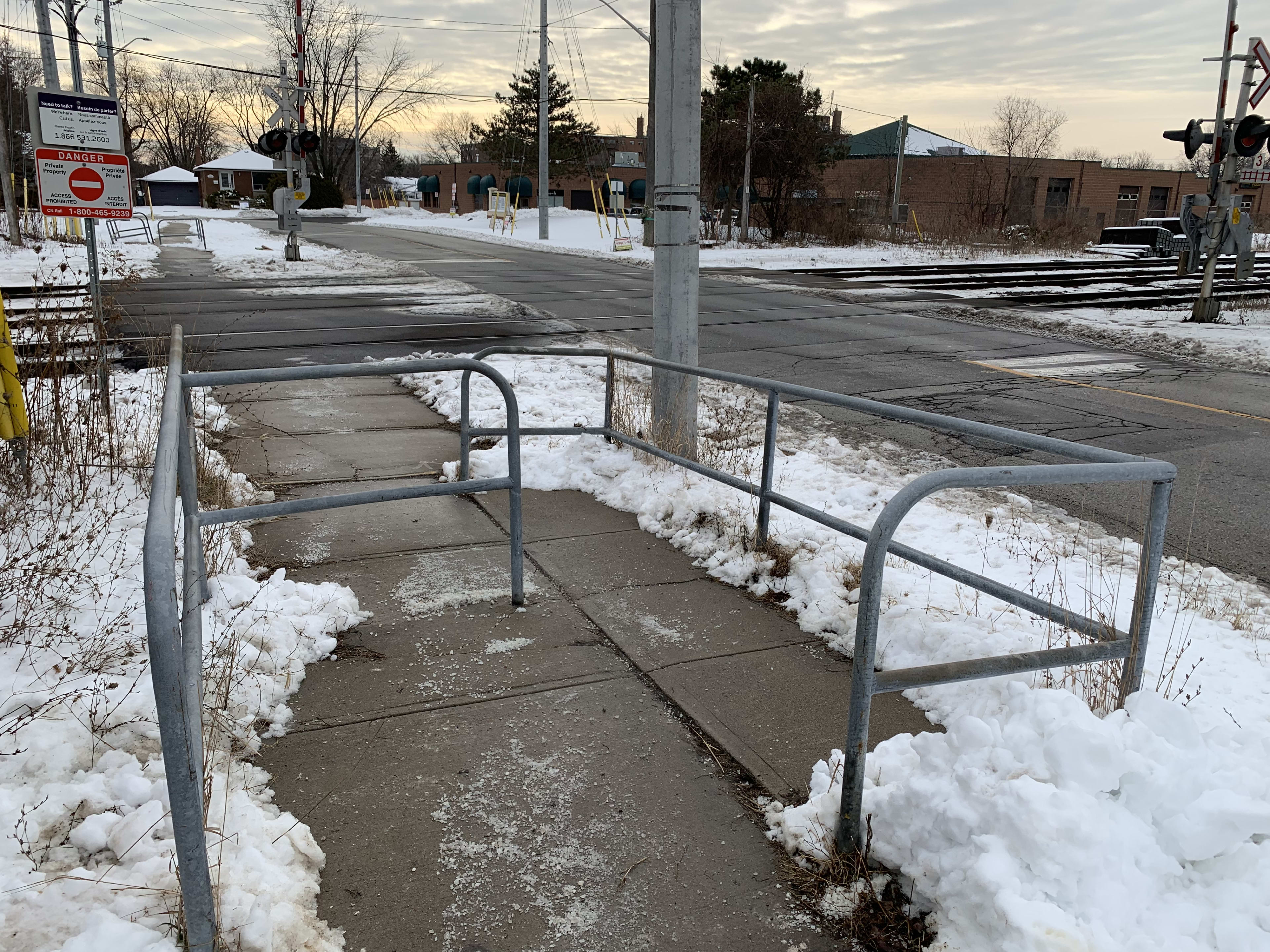Level crossing improvements along Stouffville GO Line
New pedestrian barriers help focus brains, and eyeballs, of pedestrians near tracks.
Jan 27, 2020
We all hate to wait.
Though we do it constantly – from movie lines to getting morning coffee to boarding a flight down south.
Sometimes, we have the urge to break the rules and just go for it.
That’s fine when grabbing for the turkey leg during grace. But it can be potentially life and limb threatening if you’re crossing train tracks unsafely.
An example of the maze gates. Notice how they cause pedestrians to move right and then left. (Metrolinx photo)
Metrolinx has started to install ‘maze barriers’ at three level crossings on the Stouffville rail corridor. The obstacles are a next step to improving pedestrian safety at Huntingwood, Havendale, and Finch crossings.
The work for this phase will take a number of weeks to complete. In addition to the maze gates, the crossings have other safety features including: tactile plates, signage, painted lines for both pedestrians and vehicles, ringing bells, and flashing lights.
Community reaction
“Agincourt Village Community Association is happy to see the installation of maze gates and pedestrian arms on the sidewalks at the train tracks at these locations,” said association president, Rhoda Potter.
“It’s a step closer to improving pedestrian safety at the train tracks in our community.”
Maze gates – also known as ‘Z barriers’ – look fairly simple. But they change habits and fight distraction.
First, they make people slow down as they navigate through the small maze. Then they also cause pedestrians to move left and right – allowing them to see both ways down rail tracks. This disruption in normal walking can help people pay closer attention to potential dangers.
Maze gate pads have been poured and have started curing at Havendale crossing. (Metrolinx photo)
Think about how you may saunter down a hall at your home or office in mental auto-pilot – your mind elsewhere. But if you position a few chairs along that usual path, your new navigation will make you more aware of your surroundings – including those stepping out of nearby offices.
In the case of the maze gates, they also limit the speed of cyclists using the sidewalk by making them slow down, and ideally stop, before dismounting on approach to the rail crossing.
As a stark reminder of distraction and how quickly things can happen while walking near rail lines, check out this video:
“Safety is Metrolinx’s top priority, as we continue to add a second track, and increase train traffic on the Stouffville Corridor – the maze gates are the first step towards improving the safety at these crossings,” explained Neil Johnston, Metrolinx senior project officer for Track Infrastructure.
What’s next?
The next phase of the crossing safety upgrades will incorporate the installation of dedicated pedestrian arms. This is scheduled to start in the summer of 2020.
As much as the GO network of corridor and rail can look like a maze, every improvement, including making crossings safer for communities and customers, is part of the larger puzzle of preparing the network for future increases in service.
Though beside the tracks, they’ll remind us all of what our parents told us a thousand times – to stop and look both ways before crossing.
by Stacey Kenny Metrolinx corporate communications manager
